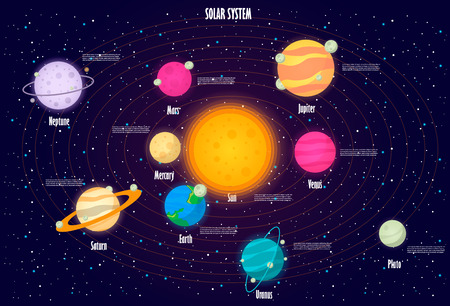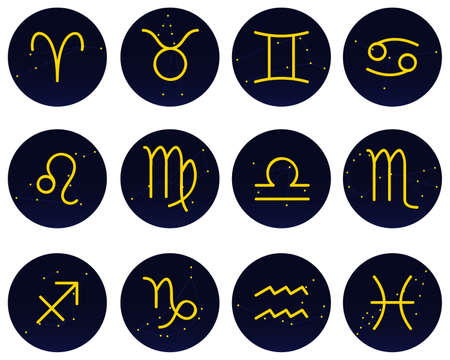Understanding Malefic Planets in Vedic Astrology
When we talk about Indian astrology, or Jyotish Shastra as it is lovingly called here, the planets play a huge role in shaping our life events. Among these celestial players, some are considered malefic—a term you might hear often from your local Pandit ji or during a family horoscope reading. In simple words, malefic planets like Shani (Saturn), Rahu, Ketu, and sometimes Mars (Mangal) are those which can bring challenges, delays, and obstacles if their energies are not balanced properly in the birth chart (Janam Kundli). In the Indian context, these planets are believed to test our patience and determination. For example, Shani Dev is famous across India for teaching life lessons through hardships but also rewarding sincere effort. Rahu and Ketu, known as shadow planets, can create confusion or sudden changes that test our mental strength. This is why our elders often consult Vedic Pandits for remedies whenever malefic influence is spotted in the horoscope—the idea being to balance these energies and invite more positivity into our daily lives.
2. How Pandits Interpret Your Horoscope
Understanding your Kundali, or birth chart, is an ancient art that Vedic pandits in India have mastered through years of study and spiritual discipline. When you approach a pandit for astrological guidance, they dive deep into the cosmic blueprint created at the moment of your birth. This process isn’t just about looking at planetary positions; it’s about decoding the subtle energies that shape your life journey.
The Wisdom Behind the Reading
Pandits use their profound knowledge of Vedic scriptures, especially the Brihat Parashara Hora Shastra and Jataka Parijata, to identify which planets are benefic (favorable) and which are malefic (challenging) in your horoscope. Their interpretation considers not just the location of planets but also their aspects, conjunctions, and the strength (Bala) each planet holds in your Kundali.
Key Elements Pandits Analyze
| Element | Description | Why It Matters |
|---|---|---|
| Lagna (Ascendant) | The rising sign at your time of birth | Sets the foundation for all planetary influences |
| Dasha Periods | Planetary time cycles unique to each person | Reveals when malefic influences become active |
| Planetary Positions & Aspects | The placement and angle of planets relative to each other | Highlights potential challenges or blessings in life areas |
| Nakshatras (Lunar Mansions) | The star constellations influencing each planet | Adds nuance to how planetary energies play out |
| Yogas & Doshas | Special combinations or flaws formed by planets | Identifies both opportunities and obstacles for remedies |
Pandits’ Intuitive Insights
Apart from technical calculations, experienced pandits rely on intuition developed through traditional practices—like meditation and mantra chanting—to sense subtle karmic patterns. This blend of science and spirituality enables them to spot malefic influences early, guiding you with personalised remedies rooted in Indian culture—whether it’s a simple puja at home or a visit to a sacred temple. The goal is always to balance your destiny with practical wisdom and spiritual upliftment.

3. Traditional Vedic Remedies: Mantras & Pujas
When it comes to countering the effects of malefic planets in your horoscope, nothing speaks more authentically to Indian roots than embracing traditional Vedic remedies. Our esteemed Pandits recommend time-tested spiritual solutions that have been handed down through generations. One of the most effective ways is chanting specific mantras dedicated to the planet causing troubles in your chart. For example, if Shani (Saturn) is giving you a tough time, chanting the “Om Sham Shanicharaya Namah” mantra 108 times daily can work wonders.
Chanting Powerful Mantras
In Indian culture, mantras are not just words – they carry divine vibrations and have the power to transform negative energies. Each malefic planet has its own set of recommended mantras. For Rahu and Ketu, our Pandits suggest reciting “Om Rahave Namah” or “Om Ketave Namah” to seek their blessings and reduce their harmful impact. It’s important to chant with devotion and correct pronunciation, which is why guidance from a learned Vedic Pandit is always advised.
Temple Rituals: Seeking Divine Intervention
Another pillar of Vedic remedies is performing pujas (ritualistic worship) in temples. Visiting renowned temples such as Shani Shingnapur for Saturn or Kalahasti Temple for Rahu and Ketu holds a special place in the hearts of many Indians. These rituals often include abhishekam (sacred bathing of idols), lighting oil lamps, and offering black sesame seeds or blue flowers, all designed to please the concerned graha (planet). Participating in these rituals not only brings peace but also creates a sense of connection with India’s vibrant spiritual heritage.
The Role of Community and Family
In India, remedies like group chanting or family temple visits aren’t just about personal relief—they foster community bonding and collective spiritual upliftment. Sharing prasad (holy offerings) after a puja or joining others for Saturday fasts dedicated to Shani Dev is deeply woven into our cultural fabric. Through these timeless practices, Vedic wisdom continues to guide us, helping turn planetary challenges into opportunities for growth and harmony.
4. Using Gemstones and Yantras
In the tradition of Vedic astrology, wearing specific gemstones and keeping sacred yantras are among the most trusted remedies suggested by experienced pandits to counteract the malefic influence of planets in your horoscope. Each gemstone and yantra is connected to a particular planet and its unique energy. Pandits, with their deep knowledge of shastras and birth chart analysis, recommend these powerful tools after careful calculation of your planetary positions.
For instance, if someone is facing obstacles due to Shani (Saturn), a blue sapphire (Neelam) or a Shani Yantra may be advised. Similarly, if Mangal (Mars) is malefic, wearing a red coral (Moonga) or keeping a Mangal Yantra can help balance its energies. However, it’s crucial to consult a learned pandit before adopting any gemstone or yantra, as the wrong one might worsen planetary effects.
| Planet | Gemstone | Yantra |
|---|---|---|
| Sun (Surya) | Ruby (Manikya) | Surya Yantra |
| Moon (Chandra) | Pearl (Moti) | Chandra Yantra |
| Mars (Mangal) | Red Coral (Moonga) | Mangal Yantra |
| Mercury (Budh) | Emerald (Panna) | Budh Yantra |
| Jupiter (Guru) | Yellow Sapphire (Pukhraj) | Guru Yantra |
| Venus (Shukra) | Diamond (Heera) | Shukra Yantra |
| Saturn (Shani) | Blue Sapphire (Neelam) | Shani Yantra |
| Rahu | Hessonite Garnet (Gomedh) | Rahu Yantra |
| Ketu | Cats Eye (Lehsunia) | Ketu Yantra |
The ritual for energising gemstones includes proper purification with Gangajal, chanting mantras like “Om Sham Shanicharaya Namah” for Saturn, and following auspicious timings suggested by the pandit. Likewise, yantras are placed on puja altars or carried in wallets after being activated through Vedic rituals and prayers. This practice is deeply rooted in Indian culture and brings not just astrological balance but also a spiritual upliftment, which many believe leads to peace and prosperity in life.
5. Charity and Seva as Remedies
In the sacred traditions of Vedic astrology, Pandits often recommend charity (daan) and seva (selfless service) as powerful remedies for pacifying malefic planetary influences in one’s horoscope. These acts are not just spiritual gestures—they are practical steps deeply rooted in Indian culture and daily life.
The Power of Daan: Giving as a Spiritual Solution
According to Vedic wisdom, each planet governs specific energies and materials. When a planet is malefic or weak in your kundali, donating items associated with that planet can help balance its energy. For example, donating black urad dal or sesame seeds is suggested for Saturn (Shani), while giving away wheat or jaggery is helpful for Sun (Surya) afflictions. These donations are ideally made on specific days, such as Saturdays for Saturn or Sundays for the Sun, enhancing their astrological impact.
Seva: The Selfless Service Tradition
Seva—serving others without expectation—holds a special place in the heart of Indian society. Whether it’s volunteering at a temple, helping the underprivileged, or simply feeding stray animals, these actions generate positive karma that can reduce the negative effects of challenging planets. Vedic Pandits often advise clients to engage in seva activities tailored to their unique planetary issues, such as serving the elderly for Saturn or supporting students for Jupiter-related doshas.
Cultural Significance and Community Connection
Charity and seva are more than astrological cures; they are woven into India’s social fabric. Acts like feeding Brahmins after performing a puja or sponsoring education for needy children reflect both spiritual intent and social responsibility. By participating in these time-honoured practices, individuals not only seek relief from planetary problems but also connect with their community and uphold dharma (righteousness).
In summary, charity and seva are essential pillars in Vedic remedial measures, blending ancient astrological guidance with everyday Indian values. Through mindful giving and selfless action, one can invite grace into life and transform planetary challenges into opportunities for personal growth and collective harmony.
6. Personal Stories: Real-Life Experiences
In India, the wisdom of Vedic astrology is woven into everyday life, and many families have experienced first-hand how remedies prescribed by learned Pandits can shift destiny’s course. Let’s explore a few heartwarming anecdotes from Indian households where Vedic solutions brought positive change.
A Mother’s Faith in Shani Puja
Mrs. Nandini Sharma from Lucknow recalls how her son faced repeated setbacks in his career due to a malefic Saturn (Shani) in his horoscope. On the advice of their family Pandit, she started performing regular Shani puja on Saturdays with black sesame oil and lighting a diya under a peepal tree. Within months, her son secured a stable job and his confidence returned. Nandini believes that the blessings of Lord Shani, invoked through traditional rituals, truly helped balance the planetary energies.
Mangal Dosh and Marital Bliss
In Chennai, the Iyer family was concerned about their daughter’s delayed marriage due to Mangal Dosh (malefic Mars). Their local Pandit suggested the Kumbh Vivah remedy—a symbolic marriage to a clay pot—followed by chanting specific mantras. Soon after completing these rituals, suitable matches came forward and their daughter happily tied the knot. The family often shares this story as proof of faith and tradition working hand-in-hand.
Rahu-Ketu Dosha and Academic Success
Young Arjun from Pune struggled with focus and academic performance because his chart showed Rahu-Ketu dosha. His grandmother insisted on wearing an energized Gomed gemstone and participating in Navagraha Homa at a nearby temple. Gradually, Arjun’s concentration improved and he topped his class the following year! The family attributes this turnaround to both hard work and the divine grace evoked by these time-honoured remedies.
The Power of Community Belief
These stories echo across India—from city flats to rural homes—where people turn to Vedic Pandits for guidance during tough times. Remedies like fasting, chanting stotras, or offering charity are not just rituals; they’re acts of hope that connect generations through shared belief in planetary harmony.
Conclusion: Faith Meets Tradition
Whether it’s overcoming obstacles or inviting prosperity, these real-life experiences show that Vedic remedies offer more than just astrological solutions—they foster resilience, optimism, and a sense of belonging within Indian culture.
7. Conclusion: Integrating Remedies in Everyday Life
Embracing the special remedies suggested by Vedic Pandits for malefic planets is not just about performing rituals—it’s about weaving these ancient traditions into the fabric of your daily life. When you approach these remedies with genuine faith and respect, you invite positive energies and harmony into your home. Here are some practical tips to help you infuse these sacred practices into your everyday routine while honouring Indian customs:
Stay Consistent With Your Remedies
Consistency is key. Whether it’s lighting a diya for Shani Dev on Saturdays or chanting mantras for Rahu on specific days, try to make these acts a regular part of your schedule. Even five minutes each day can make a difference when done with devotion.
Respect Local Traditions and Guidance
If you’re unsure about any ritual, consult a trusted local Pandit. Every region in India may have its unique way of performing certain remedies—embrace these nuances as they add deeper meaning to your spiritual journey.
Create a Sacred Space at Home
Dedicate a small corner for your daily prayers, remedies, and offerings. Keep it tidy and adorned with fresh flowers or incense sticks, fostering an atmosphere of peace and positivity that reflects traditional Indian values.
Offer Food and Charity Mindfully
Giving food or donations as a remedy has deep roots in Indian culture. When offering meals to Brahmins, cows, or the needy, do so with humility and gratitude. Such acts strengthen your connection to the divine while supporting your local community.
Practice Faith Over Perfection
Remember, the intention behind every remedy matters more than perfection in execution. Approach these rituals with an open heart and unwavering belief—this sincerity is what truly activates their power, according to our revered Vedic teachings.
By respectfully blending Vedic remedies into your daily habits, you uphold timeless traditions while nurturing balance in your horoscope and life. Trust the wisdom of the Pandits, stay rooted in your cultural heritage, and let every act become a step towards greater harmony and spiritual growth.

